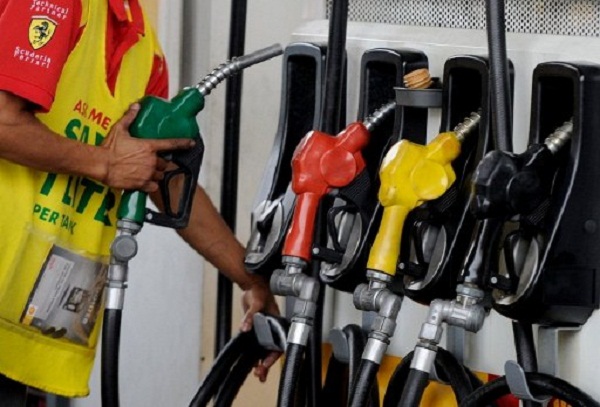
AFP FILE PHOTO
The fuel marking program will start in March after its pilot next month, but oil companies need not shell out during its first year of implementation as the government will subsidize the cost, officials of the Department of Finance (DOF) said.
Finance Undersecretary Antonette C. Tionko told reporters recently that on-site assessment of oil firms’ importation, refining and manufacturing facilities was already ongoing in preparation for the establishment and operation of the fuel marking and field testing system.
Tionko said they would launch the program aimed at curbing oil smuggling during the first week of February, after which the full implementation will be in March.
The fuel marking is required on all petroleum products that are refined, manufactured, or imported into the Philippines that are subject to the payment of duties and taxes such as but not limited to gasoline, denatured alcohol used for motive power, kerosene, and diesel fuel oil after the taxes and duties have been paid.
If the petroleum products do not contain the official marker or which contain the official marker but are diluted beyond the acceptable percentage, it shall be presumed that it was withdrawn with the intention to evade payment of taxes due.
The departments of Energy (DOE) and of Environment and Natural Resources (DENR) were also testing the marker to be used, Tionko said.
The DOF earlier said that the the joint venture of SGS Philippines Inc. and Switzerland-based SICPA SA were “expected to provide a unique chemical marker capable of being embedded at a molecular level to petroleum products such as gasoline, diesel and kerosene.”
The DOE should have had already gotten the result of its testing of the fuel marking to be used by SGS and SICPA last month, industry sources said.
“Once it’s [the marker] accepted, we will do our first marking,” Tionko said.
While the marker was already deemed “compatible,” Tionko said they needed to hurdle clearances that the DOE must issue due to its chemical content.
“We’re ongoing with the discussions so that we don’t have to get a clearance from them because we tested it already,” she said.
“At the same time, there is a team that is thinking of how to install it [the marker] in different refineries because the structures are different, so they have to adjust on how would they install the marker,” she added.
Tionko said the marker testing results “should be fast—I don’t see any problem because it’s not an additive; it doesn’t have an effect on the fuel.”
Finance Undersecretary Karl Kendrick T. Chua said the first full year of fuel marking implementation will be subsidized, with a P2-billion allocation under the national budget.
However, “in the succeeding years, it will be passed on to the industry and they may pass it on to the consumers,” Chua said.
Based on the contract with SGS and SICPA, fuel marking will cost P0.06884 a liter.
“So if the price is 6 centavos per liter and if a full tank is 40 liters, they’re paying P2.40” for fuel marking by next year, Chua explained.
To shore up revenues, fuel marking was among the tax administration measures that formed part of the Tax Reform for Acceleration and Inclusion (TRAIN) Act, which took effect in January last year.
But the contract for the fuel marking program was awarded to the SGS-SICPA joint venture only last October.
According to the DOF’s estimates, revenue losses from excise taxes and value-added tax due to oil smuggling and misdeclaration reached P26.9 billion in 2016, almost half of the actual P52.6 billion collected by the BOC and the BIR that year.
The Manila-based Asian Development Bank (ADB) had a higher estimate of P37.5 billion in foregone tax revenues yearly from oil smuggling, while another study commissioned by the domestic oil industry pegged revenue losses at P43.8 billion annually.
As such, the government wanted to implement the fuel marking program to minimize smuggling and misdeclaration as well as jack up the collections of the BOC and the BIR, the country’s two biggest revenue agencies. /jpv

